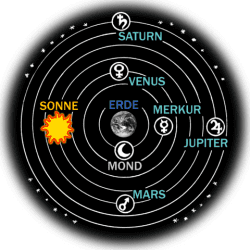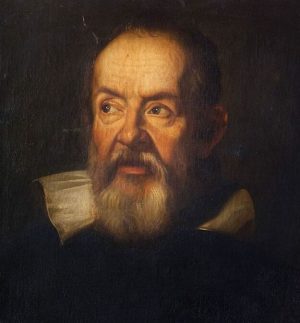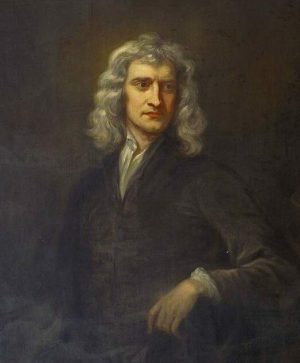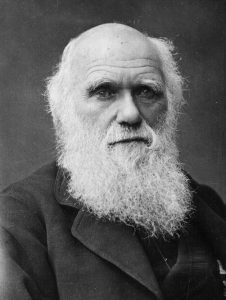Chapter 14.
The Christianity and Science Schism
In this chapter, I discuss the origin of the schism between Christianity and science and its impact. The sections are as follows:
Note: CE stands for Common Era, which began with the birth of Jesus.
Early Christianity
After the Roman Catholic Church was established as the state religion of the Roman Empire in 380 CE, the Roman Empire began to crumble, and the Church came to dominate the population. After almost a century, the Roman Empire finally collapsed, and the power vacuum that resulted in western Europe was occupied by the Church.
A Thousand Years of Suppression
Around the time that the Roman Catholic Church was established, it began a long-running conflict with intellectual pursuits. According to Helen Ellerbe in her book The Dark Side of Christian History:
The Church had a devastating impact upon society. As the Church assumed leadership, activity in the fields of medicine, technology, science, education, history, art and commerce all but collapsed. Europe entered the Dark Ages. Although the Church amassed immense wealth during these centuries, most of what defines civilization disappeared…. The losses in science were monumental. In some cases the Christian church’s burning of books and repression of intellectual pursuit set humanity back as much as two millennia in its scientific understanding. [italics added for emphasis]
Inventions are fundamental to science. To see the impact of the Church on the repression of science, we must look at the history of inventions on a worldwide basis. I found Wikipedia’s Timeline of Historic Inventions to be most informative. In the 1st century through the 3rd century CE, the number of inventions in the Roman Empire was about equal to the total number in the rest of the world.

From the late 4th century, when the Catholic Church came into political power, to the end of the 14th century, the introduction of inventions was dominated by China and India. During this period, within the area controlled by the Church, only two significant inventions appeared in Europe (both in the 13th century): the invention of eyeglasses, and the invention of the verge escapement—a primitive balance wheel for controlling the rate of mechanical clocks.

This stagnation continued in Europe until the 15th century, which saw crucial inventions in timekeeping, weaponry, printing, ship building, and navigation. These inventions helped revolutionize European society. For example, the printing press enabled the mass-production of Martin Luther’s Bible translation, which facilitated the expansion of the Protestant Reformation in northern Europe. By the 17th century, the increasing number and variety of inventions had sparked a mechanistic revolution, which was fueled by the perspective that natural phenomena could be explained by mechanical laws.
Geocentrism Versus Heliocentrism
An example of the Church’s repression of science is its suppression of heliocentrism—an astronomical model in which the Earth and other planets revolve around the sun. In the 2nd century CE, Ptolemy, a Greek mathematician and astronomer, had proposed an Earth-centric (geocentric) astronomical model that assumed that the Earth was in a fixed position with the Sun and other bodies revolving around it. Church leaders adopted and promulgated Ptolemy’s model. Throughout the Dark Ages, the Church taught that the Earth (and therefore the Church) was the center of the universe. As a result, the geocentric model (geocentrism) dominated scientific thought for some 1,400 years.

The first formal rejection of the geocentric model in Europe occurred early in the 16th century. In 1532, a Polish mathematician and astronomer, Nicolaus Copernicus, completed his work on a manuscript about his mathematical model of heliocentrism. However, although the Protestant reformation was emerging in Northern Europe, the Catholic Church retained its power in Poland and southern Europe. Fearing repercussions from the Church, Copernicus waited to publish a book about his heliocentric model until just before his death in 1543, thereby avoiding persecution as a heretic. His theory was later condemned as heretical by the Church, and the Roman Inquisition prohibited it.
Almost a century after Copernicus’s publication, as the Church still clung to the geocentric model, the Italian astronomer Galileo Galilei built his own telescope and concluded that the Earth and the other planets in our solar system revolve around the sun. Galileo, who has been called the “father” of modern science, published his findings in a book in 1632. He was convicted of heresy and faced the Roman Inquisition. To avoid being tortured, he recanted his claim that the Earth revolves around the sun. Despite his recantation, the Church gave Galileo a life sentence of house arrest; he was confined to his house, where he died in 1642.

Another key figure in 17th century science was German Johannes Kepler, who, like Copernicus and Galileo, discovered that the Earth revolves around the sun. But unlike his predecessors, Kepler was a Lutheran and, thus, was safe from the Roman Inquisition. His works helped lay the groundwork for Isaac Newton’s theory of universal gravitation, the foundation of classical mechanics, in 1687. Newton’s theory renders everything in the universe predictable. The discoveries by Kepler and Newton undermined the Church’s teachings and authority.

The Age of Enlightenment and Reason
From the late 17th century to the end of the Napoleonic Wars in 1815, Europe experienced the Age of Enlightenment (also known as the Age of Reason). This was an age when advances in scientific knowledge catalyzed the on-going mechanistic revolution. The Age of Enlightenment emphasized rational thinking and the emancipation of the human intellect. Advancements in knowledge and understanding led to the philosophy of rationalism, the view that, “regards reason as the chief source and test of knowledge” (brittanica.com). Rationalism was a new perspective in an era when the general population still placed its trust and beliefs in the Christian religion.

Scientific Materialism
Prior to the 17thcentury, Christian theologians and university scholars taught that the universe was alive, imbued by the Spirit of God, the divine breath of life. All people, animals and plants had souls. Although the key figures in the Scientific Revolution, including the scientists I have mentioned, were all practicing Christians, their scientific view created a vision of the universe as a machine intelligently designed and created by God. Everything was governed by eternal mathematical laws. This mechanistic theology was revolutionary because it rejected the animistic view of nature (that everything has a spiritual essence), which was taken for granted in Medieval Europe.
According to Rupert Sheldrake, biologist and author, from the perspective of science, the material world became a lifeless, soulless machine. In Science Set Free, Sheldrake states:
Before the mechanistic revolution, there were three levels of explanation: bodies, souls and spirits. Bodies and souls were part of nature. Spirits were non-material but interacted with embodied beings through their souls. The human spirit, or ‘rational soul,’ according to Christian theology, was potentially open to the Spirit of God. After the mechanistic revolution, there were only two levels of explanation: bodies and spirits. Three layers were reduced to two by removing souls from nature, leaving only the human ‘rational soul or spirit.’ The abolition of souls also separated humanity from all other animals, which became inanimate machines. The ‘rational soul’ of man was like an immaterial ghost in the machinery of the human body. …The final step in the mechanistic revolution was to reduce two levels of explanation to one. Instead of the duality of matter and mind, there is only matter. [italics added for emphasis]
After some initial clashes, most notably Galileo’s trial, Christianity and science became increasingly segregated by mutual agreement. Science and Christianity were practiced fairly freely from each other, at least until the emergence of militant atheism at the end of the 18th century. Militant atheists rejected the dualism of materialism and the spiritual realm, recognizing only one reality, the material world. They held that God, spirits and angels were figments of human imagination and that human minds were by-products of brain activity. They espoused scientific materialism, which is the belief that only the material world exists. Though militant atheists were a minority, their influence exerted a strong and lasting effect on scientific communities. Scientific materialism became the dominant world view within institutional science in the second half of the 19th century.
Darwin’s Evolution by Natural Selection
In 1859, Charles Darwin published his On the Origin of Species, which gave compelling evidence of his theory of evolution by natural selection. This theory implicitly downgraded humanity to just another animal species. Darwin believed that the source of creativity was in the animals and plants themselves as they adapted to new circumstances. He attributed all creativity to Nature as the creative force, rejecting the designing God of mechanistic theology. Biological evolution soon became accepted science. In grappling with the existential implications of natural selection, some philosophers and scientists saw, like Darwin, the creativity of Nature herself; others saw divine creativity. In contrast, atheists denied that evolution had any divine activity or purpose.


The theory of evolution served to undermine the six-day creation story of Adam and Eve, a pillar of Christian dogma, and as a result brought into question the overall veracity of all Christian dogma including the Bible. Nevertheless, some religious denominations have outright rejected the concept of evolution by natural selection, particularly regarding humans. The 1925 Scopes trial (known as the “monkey trial”) was an example of militant fundamentalists striving to eliminate the teaching of evolution in their public schools.
Darwin’s theory of evolution, while supported by ample evidence, lacked an explanation of the mechanism—genetics. A contemporary of Darwin’s, Gregor Mendel, defined principles of genetic inheritance based on his plant-hybridization experiments and published his principles in 1866. Unfortunately, Darwin was unaware of Mendel’s pioneering work in genetic inheritance. Eventually, on the eve of the 20th century, Mendel’s work received the attention it deserved. In the 1930s and 1940s, the combination of Mendelian genetics with Darwin’s theory of natural selection resulted in the field of evolutionary biology. In the second half of the 20th century, as an expression of scientific materialism, neo-Darwinians claimed that all creativity was exclusively due to random mutations and natural selection.
Responses to the Big Bang Theory
In the 1960s the scientific theory of the Big Bang became a mainstream idea. The Big Bang is the prevailing cosmological model. It explains the origin of the universe approximately 13.8 billion years ago and its subsequent evolution.
![14. CSS-Big-Bang-Theory_CMB_Timeline300_no_WMAP [huge] Expansion of the universe since the big bang](https://b2348605.smushcdn.com/2348605/wp-content/uploads/elementor/thumbs/14.-CSS-Big-Bang-Theory_CMB_Timeline300_no_WMAP-huge-scaled-qm6iw2jdv1jhqkuwf94gd9pznqqbw6rr59k21b4npc.jpg?lossy=1&strip=1&webp=1)
Christians who take a literal, fundamentalist interpretation of the Bible reject the Big Bang theory because it contradicts the Genesis story that God created the Earth in six days. However, other Christians embrace the theory because for them it affirms their belief that God created the world out of nothing.
In an Associated Press-GFK (Growth from Knowledge) poll taken in 2014, a slim majority of American adults—51%—had little or no confidence in the Big Bang theory. Since Christians made up about two thirds of the population, I assume that this slim majority was a reflection of the fundamentalist viewpoint. As one would imagine, there was essentially no doubt about the Big Bang in the scientific community. When the AP-GFK poll was taken, 99.9% of the members of the National Academy of Science believed the universe began with the Big Bang. For the scientific materialists among them, this means that cosmic evolution must be without purpose, exactly like biological evolution on earth.
Atheists and many agnostics in the 21st century take materialism as a scientific fact, not just a theory. Although not every atheist believes in the Big Bang theory, they all would deny that God or a deity created the universe. Some Christians argue that everything must have a first cause, so therefore the first cause must be God. Atheists counter that argument by asking who created God, and then they point out that in reality there is no reason to postulate a first cause, that it is just an assumption. They can then assert that the universe always existed and that it is purposeless, which is contrary to Christian belief in God as Creator.
In Conclusion
As science has continued to make discoveries over recent centuries, the gap between Christian beliefs and scientific materialism has steadily widened. However, conventional science is not unlike Christianity in that materialism is also an absolute belief. Materialism persists even though conventional science has never proven that only the material world exists; furthermore, quantum physics is revealing that the basis of material things is not material—it is energy.
I maintain that there is no gap between a science that is free from materialism and a spirituality that is free from Christian dogma.
